Medical Mysteries: Haitian Voodoo Zombies
There is a period in all of our lives in which we believe in magic. Normally it is during our childhood, when we are full of innocence and our eyes glimmer when hearing about Santa Claus, or the Tooth Fairy, until inevitably our beliefs are destroyed and our illusions shattered, either because someone told us the truth, we discover it on our own, or simply because we become aware that such beings could not exist. I guess that disappointment could only be compared to that of Yuri Gagarin when he became the first man to travel into space and confirmed that there was no God living in the heavens, but worse, because at least he did not find his parents up there.
However, there are some who continue to believe in magic, usually of a darker and more malicious nature, far into adulthood. Witchcraft is a relatively common practice in multiple religions, most with strong African or indigenous influence, where rituals, prayers, and even sacrifices are performed in the name of some deity in exchange for good fortune, personal success, or sometimes, to bring harm upon an enemy. It is true that there are some other religions, such as Wicca or Neopaganism, with more benevolent magical elements, but let´s recognize that their popularity is much less than that of their more malevolent variants. And there is one of them that, due to its fame and cultural impact, stands out above the others: Voodoo.
I am personally quite skeptical of anything religious in nature, and much more so when it comes to magic. I respect those who still consider it real (despite the evidence to the contrary) but I consider that it is an archaic belief that should have been left behind, such as the "theories" that the earth is flat and in the center of our galaxy. Even so, it is true that sometimes we find things that are quite difficult to explain and that, no matter from where you look, they seem to have at least some supernatural elements. Such is the case that we will review today: Haitian zombies created with voodoo.
Medical Mysteries: Haitian Voodoo Zombies
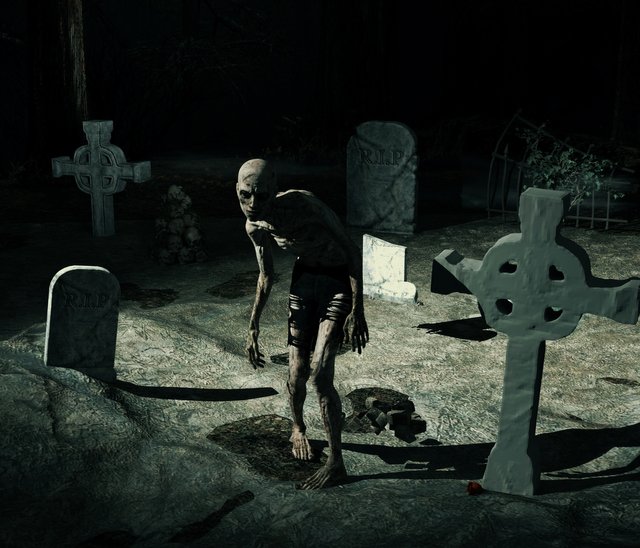
Zombies are an element that has always present in our culture, popularized in the 1960s and 1970s and used as a social criticism of consumerism. Today they are one of the best known and more frequently used creatures in all entertainment media, not to mention their prevalence as a Halloween costume (seriously, have a bit of originality). In most representations, they are corpses revived by some virus, or sometimes without explanation, that feed on the living, either feasting on their brain or on any part of their body. What happens to this food after being ingested is a real mystery since they are not usually seen excreting it (nor belching, it seems that the secret to good bowel movements is to be a little dead). Their fame is known to have spread worldwide thanks to movies like The Night of the Living Dead and its sequel The Dawn of the Dead, but the word has been in use for many years before its first mention in any movie. The case of Haiti stands out above all others, and it Is because there, zombies are considered a reality.
Although the first known use of the concept of "zombie" dates from 1697 in the French novel Le Zombi du grand Pérou, ou La comtesse de Cocagne, in this work it refers more to a disembodied ghost than to an undead creature with a hunger for meat flesh. In Haitian culture, the term "zombi" or "zonbi" has a meaning more similar to the one we all know, but with the specification that the corpse is revived by witchcraft or black magic, usually to be used as a slave on plantations. The ritual to turn a human into a zombie is normally performed by a Bokor; a sorcerer practitioner of the Voodoo religion, who is said to be capable of performing black magic, but also of benevolent acts.
In voodoo, they believe in the dualism of the soul: one part (called the Ti Bon Ange; little good angel) is responsible for physical functions, such as the circulation or breathing, and another (Gros Bon Ange, great good angel ) controls personality and character. The bokor is capable of trapping both parts of the soul, turning the person into a corporeal zombie slave, or creating an astral zombie, whose soul is imprisoned in a bottle and brings success and good fortune to whoever possesses it. Now, surely you think that this is the part of the post where I say that all this is false and the product of myths and superstitions, but the truth is that there is enough evidence - even legal - of people who "died" only to come back to life. I am not claiming that zombies are a reality and that you should take an online voodoo course to resurrect a slave to do your homework, but it is true that we have to analyze all the evidence carefully to try and find a logical explanation for all this.
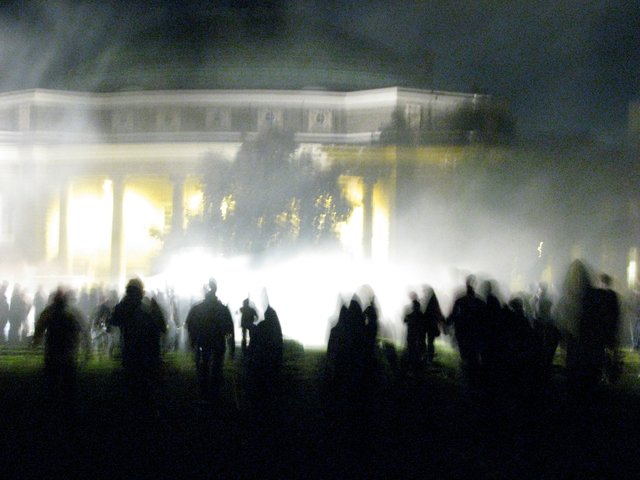
Most of this evidence comes from the chronicles of a Canadian botanist named Wade Davis, who in 1982 investigated the legend of the Haitian zombies on an expedition from the Harvard Botanical Museum. There he met a bokor who, after much persuasion and considerable financial compensation, explained the zombification process to him.
It all starts with a powder mix called coup de poudre, literally "powder strike". The ingredients of the coup de poudre included a variety of herbs with supposed mystical powers, animal parts, and human bones, commonly from desecrated tombs. The way to administer it could vary, from rubbing it on the skin to diluting it in a liquid and shooting it via dart, but the results were the same: the rapid and apparent death of the victim. However, the bokor admitted to Wade that ot was not actually lethal; the mixture only paralyzed the person and hid his vital signs, lowering his pulse and respiratory rate and abolishing the sound of his heartbeat, but this was enough to deceive most doctors, who pronounced the death of the patient and, due to the heat and the shortage of refrigerated morgues in the most rural areas of Haiti, authorized the burial of the apparent corpse a few hours later. Some time after the burial, after the mourners were gone, the bokor unearthed the body, and then the ritual began.
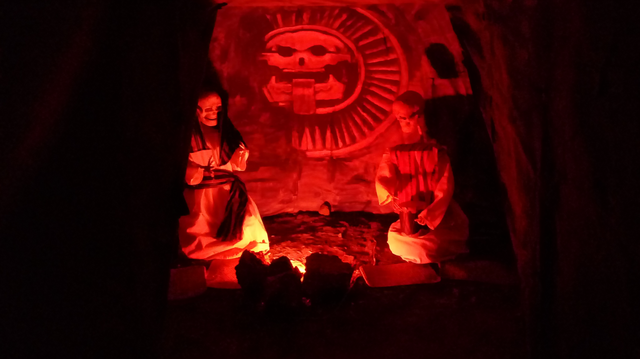
This ancient voodoo rite consisted of capturing the victim's ti bon ange, separating its soul into its two parts and creating two types of zombies at the same time: the physical one, or zombie cadavre, and the aforementioned astral zombie. The astral part, or what had previously been the ti bon ange, was then trapped in a container, and replaced by a loa; intermediary spirits between men and voodoo deities, under the control of the bokor. A day or two later, the victim was given a paste made from a tuber known as "zombie cucumber", along with sweet potato and sugar syrup, which revived the victim and kept him in a servile state , without memory, and almost without traces of his previous personality. Thus began the _(un)_life of the zombie; an empty shell used for free labor, enslaved in the plantations, completely under the yoke of the bokor, until the latter died. Only then would the zombie be released, finally being able to return home and die in peace.
But not all were legends and stories told by someone who could perfectly be a charlatan taking advantage of a young man´s credulity. You see, what triggered the expedition was news that became known worldwide about Clairvius Narcisse, a Haitian man who, in 1962, went to a local hospital complaining of dyspnea (respiratory distress) and high fever. Two days later, he was dead. Marie-Clare and Angelina, his sisters, identified the body after the issuance of his death certificate (still kept in the archives of the town of l'Estere), and the day after he was buried in the local cemetery. His story does not end with his death, however, since 18 years later in 1980, Angelina was on the market when she was approached by a man who seemed familiar. He introduced himself as her late brother, and upon close examination, there was no doubt that it was him. He told her how he had been poisoned, supposedly by order of their brother with whom he had had a dispute, and had fallen into a state of paralysis, but still aware of his surroundings. He heard how the doctors pronounced him dead, and his family weeping, mourning his death during his burial. He was trapped in the coffin until he was exhumed by a bokor, who tied and gagged him and then administered a paste that, according to him, robbed him of his will to fight and escape, leaving him in a dreamlike state. For two years he was like this, working as a slave on a plantation, until his captor was killed by another zombie, and only then was he released. Ashamed, and scared of his brother whom he thought had caused his hardships, he wandered aimlessly for 16 years, living in the streets, until he found out about his brother's death and decided that he could return home safely .
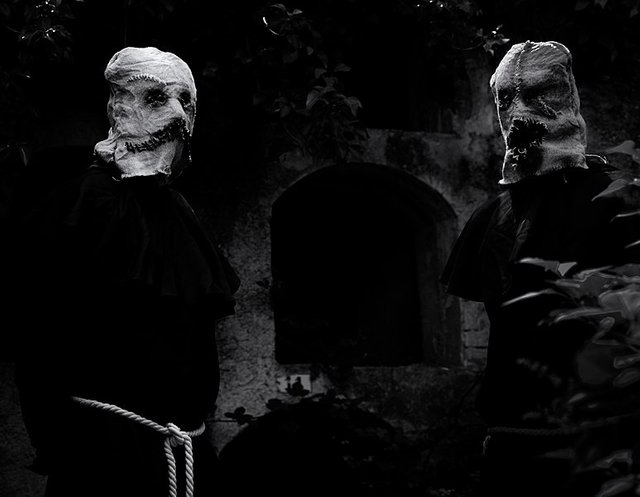
But Wade, being a man of science, refused to accept this supernatural version of events and set about seeking a logical and earthly explanation for everything that he had been found. He realized that many of the components of both the coup de poudre and the zombie cucumber based paste, had well-known and studied properties that could be the key to understanding the truth behind the art of zombification. He acquired and investigated the components of the zombie powder and realized that there were 3 ingredients that were always repeated: parts of human remains, a variety of plants, and puffer fish. The latter was of particular importance, because it is known to contain a powerful toxin called tetradotoxin. Tetradotoxin, or TTX basically works by preventing the transmission of the electrical impulse that neurons generate, called the action potential, by blocking the calcium channels _(one of the channels in the membranes of nerve cells through which electrolytes, such as calcium, sodium or potassium, pass, carrying an electric charge) _. In this way, the action potential cannot trigger muscle movement, and paralysis occurs, which in large enough doses can even affect the heart and diaphragm (the main muscle responsible for breathing). The victim remains conscious for a few moments, but since there is no cardiac or respiratory activity, after a few minutes the flow of blood and oxygen to the brain is cut off and he falls into a kind of coma. Fortunately, the effect is usually temporary and reversible, and the affected person can fully recover if the effect subsides before there is severe brain damage.
As we can see, this effect matches with what the coup de poudre is supposed to do, so the apparent reasonable answer would be that the other ingredients fulfilled a small or even null role, and the state of "false death" was caused by the TTX of the puffer fish. Already having a meaningful explanation (beyond "a sorcerer did it") for one of the phases of zombification, he decided to also analyze the components of the paste that the Bokor used to revive and enslave their victims, focusing especially on the "zombie cucumber", which happened to be just a plant called Datura stramonium, common in temperate zones, and highly toxic. Among the constituent substances of Datura are atropine, hyoscyamine, and scopalamine (also known as hyoscine or burundanga), capable of causing strong psychotropic reactions, along with a state of delirium and disorientation. Having discovered this, Wade came forward with the first part of his theory on the truth of voodoo zombification: The bokor poisoned the victim with coup de poudre based on puffer fish, and when the tetradotoxin took effect, he fell into a state almost indistinguishable from death. He then waited for the end of the funeral rites, and dug up the body to give him a dose of a paste created mainly with Datura. The combination of the psychotropic effects of this plant, along with brain hypoxia (lack of oxygenation) caused by both the TTX and the low air capacity in the average coffin, caused the victim to wake up confused and in a state of stupor, being easily susceptible to suggestions and psychological manipulation by the supposed sorcerer, who took advantage of this, along with the brain damage caused by hypoxia, to enslave him and convince him that he had trapped his soul, and therefore, was now under his control.
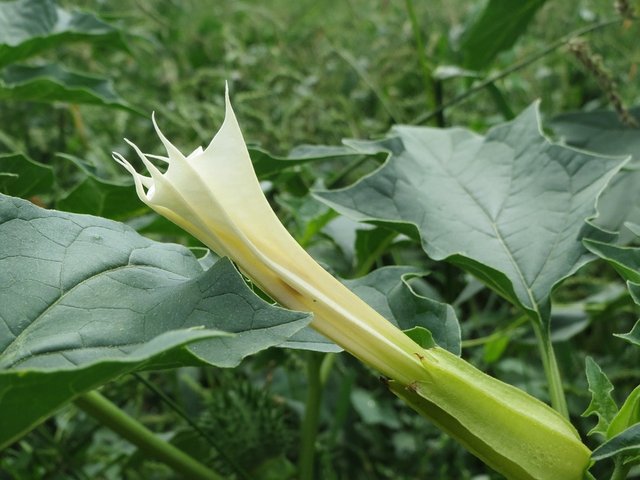
I know you’ve had the wrong mental picture every time you have read “zombie cucumber, so here is a picture of the Datura stramonium
But there were flaws with his hypothesis. First, the TTX dose had to be exact to cause the desired effect; adding less would only cause tingling and a state of euphoria, and an excessive amount would cause ultimate death, with no hope of "revival." After analyzing several samples of the powder obtained during the expedition in Haiti, it was found that the amount of tetradotoxin was wildly inconsistent, and therefore the zombification process was unlikely to occur regularly and reliably. Another problem was that the Datura, while causing disorientation, it is only temporary, unable to keep a person without will for prolonged periods. Perhaps hypoxia could help with this, but someone with enough brain damage to be this compliant would not be very well suited for any type of manual labor.
But then, how do we explain the case of Clairvius Narcisse, and other apparent "zombies" documented and identified by his relatives? Well, we take into account all the above factors, plus one of utmost importance: belief. I once previously posted about cultural-bound syndromes; psychological syndromes linked to the folklore of a people or the beliefs of a person. Knowing that an individual's faith can be strong enough to change the perception of their own body and even cause physical symptoms, it is not unreasonable to think that the prevalence of voodoo culture in Haiti, in which zombies are seen as real by a large part of the population, may affect a person undergoing the zombification process enough to genuinely believe that they are dead, and under the control of sorcerer, unable to reject their orders because their own beliefs prevent them. This, linked to the use of the aforementioned toxins and psychotropic substances, together with the psychological trauma that comes from being buried alive, could undoubtedly be able to create a state similar to catatonic schizophrenia, simulating the zombification that we can see in works of fiction, but with more docility and less death and cannibalism.

Less “braaaaiiiiins” and more “help I’m being kidnapped by a slaver”
In summary, while it is true that when visiting a plantation in Haiti you will not find a zombified and enslaved labor force that would be the envy of the plantation owners of the pre-Civil War American south, it is more than possible that voodoo zombies, at least in small numbers, existed throughout the nation's history. However, voodoo religion has nothing to do with it, at least not supernaturally. On the rare occasions when the dose of tetradoxin was adequate, and the victim was mistakenly pronounced dead and then unearthed in time before dying from oxygen deprivation in the coffin, the mix of the traumatizing experience, combined with the person’s strong personal beliefs in voodoo witchcraft, and surely some good old death threats from the bokor (classics never fail) are enough to achieve a process of "zombification", not caused by black magic, but by trauma, psychological manipulation, and drug use. And it would hardly be the first time that all these factors together cause a state of docility, or even catatonia. As we can see, even the most complex situations have an explanation based on science and far from the supernatural. We still haven't found the answer to many questions, nor the reason for innumerable phenomena, but as I always like to say, the fact that we don't have explanations now does not mean that we will never have them. After all, and as I said in the introduction, a few thousand years ago we thought we lived on a flat earth and the sun revolved around us. It is a matter of never giving up, and searching for the truth, however complex it may be.
References
- Harvard Magazine – The secrets of Haiti’s living dead
- Live Science – How to make a zombie
- Live Science – Zombies: the real story of the undead
- Zombification – process
- Daily Mail – The story of the Haitian voodoo leader who revealed the secret of “Zombie powder”
- Science Magazine – Voodoo science
- Skeptical Inquirer - Zombies and tetrodotoxin
- Wikipedia – Zombie
- Wikipedia – Clairvius Narcisse
- Wikipedia – Culture-bound síndrome